Something to Declare
Julia Alvarez
The first nonfiction work by acclaimed novelist Julia Alvarez—twenty-four personal essays on the experience of immigration and the writing life
The rich and revealing essays in Something to Declare offer Julia Alvarez's dual meditations on coming to America and becoming a writer. In the first section, "Customs," Alvarez relates how she and her family fled the Dominican Republic and its oppressive dictator, Rafael Trujillo, settling in New York City in the 1960s. Here Julia begins a love affair with the English language under the tutelage of the aptly named Sister Maria Generosa. Part Two——"Declarations—"Declarations"—celebrates Alvarez's enduring passion for the writing life. From the valentine to mythic storyteller Scheherazade that is "First Muse," to a description of Alvarez's itinerant life as a struggling poet, teacher, and writer in "Have Typewriter, Will Travel," to the sage and witty advice of "Ten of My Writing Commandments," Alvarez generously shares her influences and inspirations with aspiring writers everywhere.
"Reading Julia Alvarez's new collection of essays is like curling up with a glass of wine in one hand and the phone in the other, listening to a big-hearted, wisecracking friend share hard-earned wisdom about family, identity, and the art of writing."—People
0452280672
Tori Amos: Little Earthquakes
Tori Amos
A deluxe matching folio to Tori Amos?s debut album, Little Earthquakes. Piano/vocal arrangements with complete lyrics, color and black-and-white photos, and notes on the songs by Tori herself. Includes the hit singles Crucify, China, and Winter, plus a complete discography.
0825613450
Tori Amos: Piece by Piece
Tori Amos, Ann Powers
An intimate, eye-opening look inside the life of one of the most unique and adored performers of contemporary rock music
From her critically acclaimed 1992 debut, Little Earthquakes, to the recent hit, Scarlet’s Walk, Tori Amos has been a formidable force in contemporary music, with one of the most dedicated fan bases in the industry. In Tori Amos: Piece by Piece, the singer herself takes readers beyond the mere facts, explaining the specifics of her creative process—how her songs go from ideas and melodies to recordings and passionately performed concert pieces.
Written with acclaimed music journalist Ann Powers, Tori Amos: Piece by Piece is a firsthand account of the most intricate and intimate details of Amos’s life as both a private individual and a very public performing musician. In passionate and informative prose, Amos explains how her songs come to her and how she records and then performs them for audiences everywhere, all the while connecting with listeners across the world and maintaining her own family life (which includes raising a young daughter). But it is also much more, a verbal collage made by two strong female voices—and the voices of those closest to Amos—that calls upon genealogy, myth, and folklore to express Amos’s unique and fascinating personal history. In short, we see the pieces that make up—as Amos herself puts it—“the woman we call Tori.”
With photos taken especially for this book by the photographer Loren Haynes, Tori Amos: Piece by Piece is a rare treat for both Tori listeners and newcomers alike, a look into the heart and mind of an extraordinary musician.
I choose to fight my battles through my music . . . I was born a feminist. And then at age five, when my strict Christian grandmother punished me, I realized, I’m not penetrating here. I’m just pissing people off. So I had to find another way to penetrate. I had to redefine what that word means. That word now is really about an opening, an entering into a separate space. And after the first phase of my life, I realized that it was okay to enter that space without having to be invaded . . . I like the idea of just being able to be inside. Not using penetration as a violent word. The idea of being able to find keys . . . music, using keys to get into a space that we couldn’t before . . .
Now, backstage at an undisclosed arena where the sweat of athletes is still perfuming my makeshift dressing room, my many conversations with Ann Powers have begun . . .
“You come from the journalist side. I come from the artist side. It can become offensive. I’m sure from your side as well as from mine.”
“Well, it’s true everyone expects us to be enemies. And in some ways we are. My job is interpretation. Yours is art, which often benefits from mystery . . .”
Ann and I decided to strip our roles back to basics. We are both women born feminists in the 1960s. We are both married. We are both mothers. We are both in the music industry. Traditionally we are enemies. But for this project to be effective, I had to allow Ann to expose Tori Amos. And Tori Amos’s inner circle. And me.”
– from the Introduction
BUY TORI AMOS’S LATEST RECORDING, THE BEEKEEPER, ON EPIC RECORDS
076791676X
|
Tori Amos For Fingerstyle Guitar With Tablature
Tori Amos, Marcel Robinson
Features Black-Dove (January), Black Swan, Blood Roses, Caught A Lite Sneeze, China, Cornflake Girl, Icicle, In the Springtime of His Voodoo, Jackies Strength, Little Earthquakes, Past the Mission, Pretty Good Year, Silent All These Years, Spark, Talula and Winter plus an educational CD.
0825616948
Sundancing: Hanging Out And Listening In At America's Most Important Film Festival
John Anderson, David Morgan
Every winter, 8,000 feet above sea level in the Utah snow, the hopes and dreams of young moviemakers are put on display at the Sundance Film Festival—the haven for independent films where you can show up a kid and go home a star. In barely twenty years of existence, the festival—now overseen by Robert Redford's Sundance Institute—has assumed tremendous importance for today's film culture: during the annual ten-day event, tiny Park City is so overrun by agents, publicists, studio executives, and other Hollywood types that in 1988 they blew out the town's cell-phone relay system.
JOHN ANDERSON, chief film critic for New York Newsday, attended his ninth Sundance in 1999, but this time he did more than screen films and leap for tables at overbooked restaurants. He interviewed performers and filmmakers of all kinds, including top prize winners, but also uncovered the effect of all this ballyhoo on the indie film scene—and on the bemused Park City locals. Alongside the thoughts of Diane Lane, Steve Buscemi, Mike Figgis and other distinguished film people are conversations with festival volunteers, bus drivers, policemen, shopkeepers, and more. Together, they form the most candid, most fascinating, most hilarious, and most human-sized coverage of the Sundance Film Festival ever achieved. Join John Anderson as he goes...SUNDANCING Every winter, 8,000 feet above sea level in the Utah snow, the hopes and dreams of young moviemakers are put on display at the Sundance Film Festival—the haven for independent films where you can show up a kid and go home a star. In barely twenty years of existence, the festival—now overseen by Robert Redford's Sundance Institute—has assumed tremendous importance for today's film culture: during the annual ten-day event, tiny Park City is so overrun by agents, publicists, studio executives, and other Hollywood types that in 1988 they blew out the town's cell-phone relay system.
JOHN ANDERSON, chief film critic for New York Newsday, attended his ninth Sundance in 1999, but this time he did more than screen films and leap for tables at overbooked restaurants. He interviewed performers and filmmakers of all kinds, including top prize winners, but also uncovered the effect of all this ballyhoo on the indie film scene—and on the bemused Park City locals. Alongside the thoughts of Diane Lane, Steve Buscemi, Mike Figgis and other distinguished film people are conversations with festival volunteers, bus drivers, policemen, shopkeepers, and more. Together, they form the most candid, most fascinating, most hilarious, and most human-sized coverage of the Sundance Film Festival ever achieved. Join John Anderson as he goes...SUNDANCINGEvery winter, 8,000 feet above sea level in the Utah snow, the hopes and dreams of young moviemakers are put on display at the Sundance Film Festival—the haven for independent films where you can show up a kid and go home a star. In barely twenty years of existence, the festival—now overseen by Robert Redford's Sundance Institute—has assumed tremendous importance for today's film culture: during the annual ten-day event, tiny Park City is so overrun by agents, publicists, studio executives, and other Hollywood types that in 1988 they blew out the town's cell-phone relay system.
JOHN ANDERSON, chief film critic for New York Newsday, attended his ninth Sundance in 1999, but this time he did more than screen films and leap for tables at overbooked restaurants. He interviewed performers and filmmakers of all kinds, including top prize winners, but also uncovered the effect of all this ballyhoo on the indie film scene—and on the bemused Park City locals. Alongside the thoughts of Diane Lane, Steve Buscemi, Mike Figgis and other distinguished film people are conversations with festival volunteers, bus drivers, policemen, shopkeepers, and more. Together, they form the most candid, most fascinating, most hilarious, and most human-sized coverage of the Sundance Film Festival ever achieved. Join John Anderson as he goes...SUNDANCING
0380804808
Why Cats Do That: A Collection of Curious Kitty Quirks
Karen Anderson
Why do cats get stuck in trees? Why do cats bring us their latest catch? Why do cats always land on their feet? Why do cats torture their prey? These and 36 other curious cat behaviors are informatively and lightheartedly answered in the handsomely illustrated Why Cats Do That. An original pencil drawing illustrates each insightful explanation of odd but characteristic cat actions, social graces and sometimes kooky quirks.
1572234059
Catalyst
Laurie Halse Anderson
Chemistry honors student and cross-country runner Kate Malone is driven. Daughter of a father who is a reverend first and a parent second ("Rev. Dad [Version 4.7] is a faulty operating system, incompatible with my software.") and a dead mother she tries not to remember, Kate has one goal: To escape them both by gaining entrance to her own holy temple, MIT. Eschewing sleep, she runs endlessly every night waiting for the sacred college acceptance letter. Then two disasters occur: Sullen classmate Teri and her younger brother, Mikey, take over Kate's room when their own house burns down, and a too-thin letter comes from MIT, signifying denial. And so the experiment begins. Can crude Teri and sweet Mikey, combined with the rejection letter, form the catalyst that will shake Kate out of her selfish tunnel vision and force her to deal with the suppressed pain of her mom's death? "If I could run all the time, life would be fine. As long as I keep moving, I'm in control." But for Kate, it's time to stop running and face the feelings she's spent her whole life racing away from.
Catalyst, Laurie Halse Anderson's third novel for teens, is a deftly fashioned character study of a seldom explored subject in YA fiction: the type-A adolescent. Teens will identify (if not exactly sympathize) with prickly Kate instantly, and be shocked or perhaps secretly pleased to discover that life is no easier for the honor roll student than it is for the outcast. Anderson earns an A plus for this revealing and realistic take on life, death, and GPAs. (Ages 12 and older) —Jennifer Hubert
0142400017
Fever 1793
Laurie Halse Anderson
On the heels of her acclaimed contemporary teen novel Speak, Laurie Halse Anderson surprises her fans with a riveting and well-researched historical fiction. Fever 1793 is based on an actual epidemic of yellow fever in Philadelphia that wiped out 5,000 people—or 10 percent of the city's population—in three months. At the close of the 18th century, Philadelphia was the bustling capital of the United States, with Washington and Jefferson in residence. During the hot mosquito-infested summer of 1793, the dreaded yellow fever spread like wildfire, killing people overnight. Like specters from the Middle Ages, gravediggers drew carts through the streets crying "Bring out your dead!" The rich fled to the country, abandoning the city to looters, forsaken corpses, and frightened survivors.
In the foreground of this story is 16-year-old Mattie Cook, whose mother and grandfather own a popular coffee house on High Street. Mattie's comfortable and interesting life is shattered by the epidemic, as her mother is felled and the girl and her grandfather must flee for their lives. Later, after much hardship and terror, they return to the deserted town to find their former cook, a freed slave, working with the African Free Society, an actual group who undertook to visit and assist the sick and saved many lives. As first frost arrives and the epidemic ends, Mattie's sufferings have changed her from a willful child to a strong, capable young woman able to manage her family's business on her own. (Ages 12 and older) —Patty Campbell
0689848919
Speak
Laurie Halse Anderson
Since the beginning of the school year, high school freshman Melinda has found that it's been getting harder and harder for her to speak out loud: "My throat is always sore, my lips raw.... Every time I try to talk to my parents or a teacher, I sputter or freeze.... It's like I have some kind of spastic laryngitis." What could have caused Melinda to suddenly fall mute? Could it be due to the fact that no one at school is speaking to her because she called the cops and got everyone busted at the seniors' big end-of-summer party? Or maybe it's because her parents' only form of communication is Post-It notes written on their way out the door to their nine-to-whenever jobs. While Melinda is bothered by these things, deep down she knows the real reason why she's been struck mute...
Laurie Halse Anderson's first novel is a stunning and sympathetic tribute to the teenage outcast. The triumphant ending, in which Melinda finds her voice, is cause for cheering (while many readers might also shed a tear or two). After reading Speak, it will be hard for any teen to look at the class scapegoat again without a measure of compassion and understanding for that person—who may be screaming beneath the silence. (Ages 13 and older) —Jennifer Hubert
0374371520
|

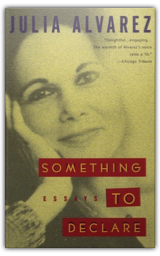
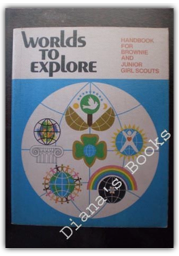
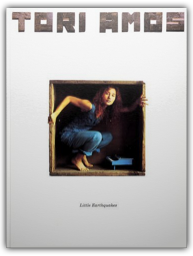




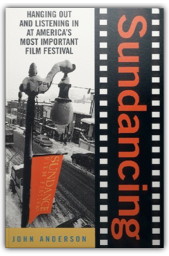
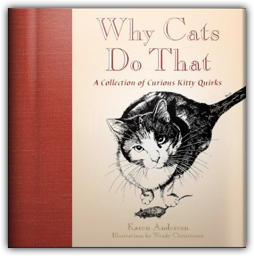
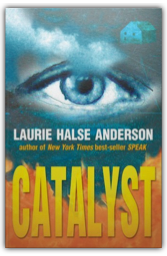
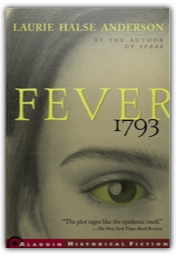
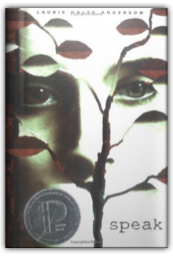


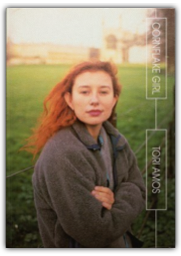
 Made with Delicious Library
Made with Delicious Library